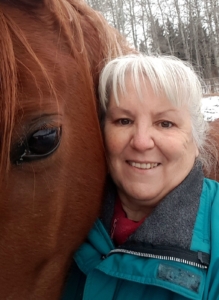Blame Art Jones.
I transferred to the University of Regina’s journalism program in the late ‘80s as a key move in my plan to become a newspaper reporter. The  realization had hit home a few years earlier that riding race horses, driving truck and slinging beer were poor career choices for someone who wants to stay healthy past 30. The idea of getting paid to chat with all kinds of people, take pictures and enjoy a few adventures had become unimaginably attractive.
realization had hit home a few years earlier that riding race horses, driving truck and slinging beer were poor career choices for someone who wants to stay healthy past 30. The idea of getting paid to chat with all kinds of people, take pictures and enjoy a few adventures had become unimaginably attractive.
At the time, Jones was a CBC reporter specializing in agriculture and seconded to the journalism program as a sessional instructor. I still remember him standing in front of a motely crew of students from all sorts of backgrounds and talking about the opportunities available for people interested in covering agriculture.
Really?
My family was two generations removed from farming, so while we lived in the country and still had some relatives in the business, we never had to rely on chickens and pigs to butter our bread.
My knowledge of pigs was limited to those random experiences we had visiting Auntie Jean’s place at Tees, Uncle Nic’s at Two Hills or my great-grandmother’s place in the bush north of Evansburg. I learned about vicious sows when one of Auntie Jean’s mamas bit my cousin in the back of the neck.
I learned about the awesome cuteness of piglets at my great-grandmother’s farm. And, at Uncle Nic’s farm, I learned that the old boar would happily carry up to seven squirming kids on his back if they were to bribe him in advance with a good back scratch. Staying up there was another story. I also learned the heartbreak of watching gallons of freshly separated milk being poured to the sows after Auntie Elsie got her cup of cream. All the same, I felt confident enough in my limited knowledge of farming to seriously consider focusing my efforts on covering agriculture.
Now, they weren’t doing a lot with farming in my first job at the Banff Craig & Canyon, where I had held a summer position a couple of years earlier. That door opened a few months later, when the Red Deer Advocate, a daily newspaper where I had also done a summer stint, hired me as a general reporter.
The Advocate already had someone covering the agriculture beat, which it had combined with politics. Some time later, after she had moved on, I asked if I could have the beat – just in time to catch the blood splashing on the floor as the Alberta Pork Development Corporation was being slaughtered over its investment in Fletcher’s Fine Foods. I met a lot of people with very strong opinions at the time – Mack Rennie, Bryan Perkins, Jurgen Preugschas and Jim Smith among them – and they taught me more than I wanted to know about the politics of pigs.
The dust settled and the “pork board” was split up to form Alberta Pork and the Western Hog Exchange. The Fletcher’s plant survived a brutal labour strike and was eventually purchased by Olymel in Quebec.
My education in the politics of pigs continued in 1998 as frightened farmers gathered in Red Deer to talk about the pending doom in the industry. For many, it would be the last straw. Those of us whose incomes did not depend on pig prices could only watch in horror as struggling producers were driven out of a business that, at one time, had been the backbone of their farms.
So, maybe 15 years after hearing Art Jones’s pronouncement about opportunities in agricultural journalism, I got a call from a young woman who had just purchased an Alberta-based hog magazine and was looking for a reporter interested in covering the pork industry. She had been with the magazine since it started in 1996 but had recently bought it out right and needed to find a central Alberta based freelance writer.
I think I can manage that, I said. You’re hired, said Laurie Brandly, proud new owner of Prairie Hog Country. And by the way – can you go to Banff in January?
Thanks, Art. Good advice. •
— By Brenda Kossowan




